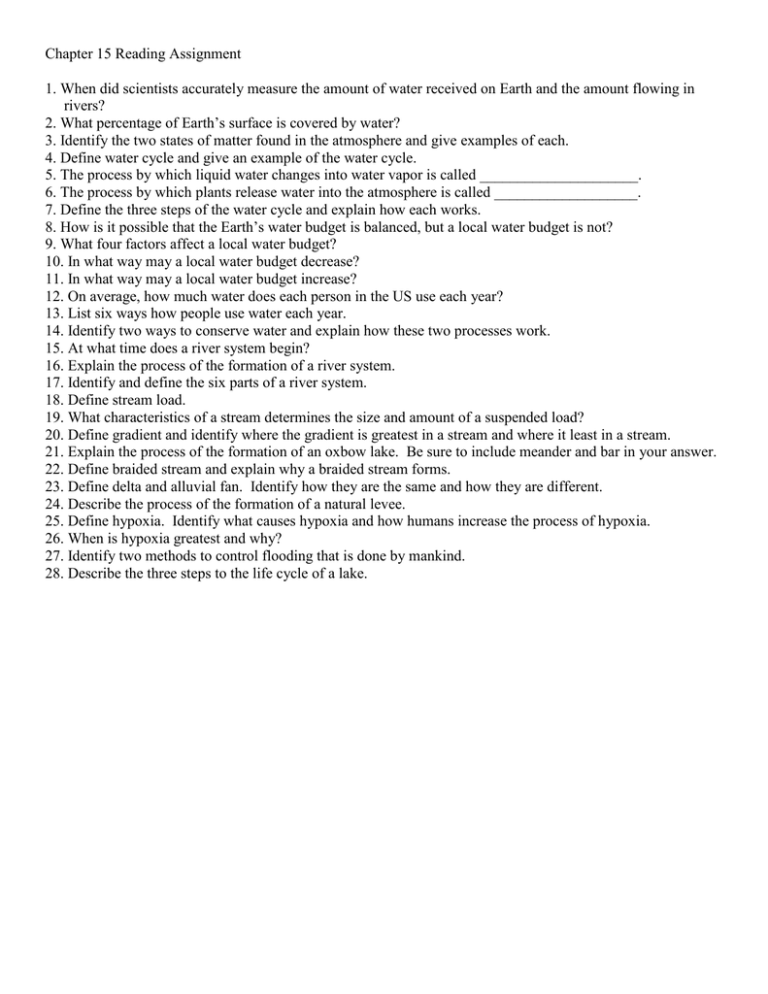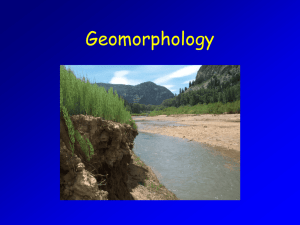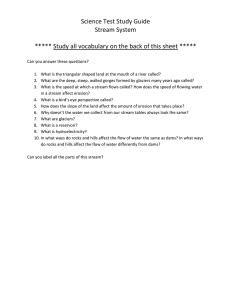Chapter 15 Reading Assignment
advertisement

Chapter 15 Reading Assignment 1. When did scientists accurately measure the amount of water received on Earth and the amount flowing in rivers? 2. What percentage of Earth’s surface is covered by water? 3. Identify the two states of matter found in the atmosphere and give examples of each. 4. Define water cycle and give an example of the water cycle. 5. The process by which liquid water changes into water vapor is called _____________________. 6. The process by which plants release water into the atmosphere is called ___________________. 7. Define the three steps of the water cycle and explain how each works. 8. How is it possible that the Earth’s water budget is balanced, but a local water budget is not? 9. What four factors affect a local water budget? 10. In what way may a local water budget decrease? 11. In what way may a local water budget increase? 12. On average, how much water does each person in the US use each year? 13. List six ways how people use water each year. 14. Identify two ways to conserve water and explain how these two processes work. 15. At what time does a river system begin? 16. Explain the process of the formation of a river system. 17. Identify and define the six parts of a river system. 18. Define stream load. 19. What characteristics of a stream determines the size and amount of a suspended load? 20. Define gradient and identify where the gradient is greatest in a stream and where it least in a stream. 21. Explain the process of the formation of an oxbow lake. Be sure to include meander and bar in your answer. 22. Define braided stream and explain why a braided stream forms. 23. Define delta and alluvial fan. Identify how they are the same and how they are different. 24. Describe the process of the formation of a natural levee. 25. Define hypoxia. Identify what causes hypoxia and how humans increase the process of hypoxia. 26. When is hypoxia greatest and why? 27. Identify two methods to control flooding that is done by mankind. 28. Describe the three steps to the life cycle of a lake.



